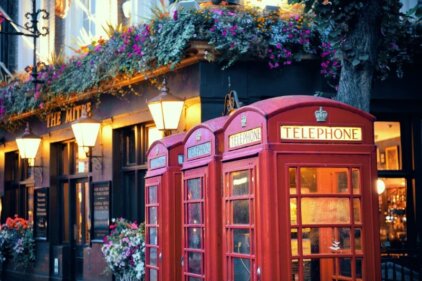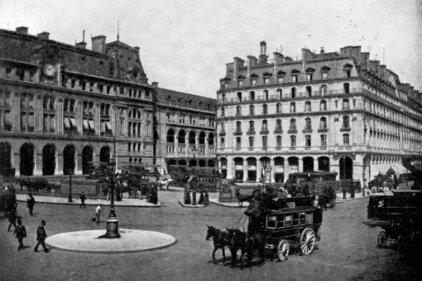London’s architectural evolution is a testament to its rich history and the influence of different eras. From the grandeur of Georgian London to the Gothic revival and the modern marvels that dot the skyline, each style tells a unique story. Join me on this journey as we explore the history of London’s architectural style and unravel the timeless charm that the city exudes.
The history of London’s architectural style
London’s architectural style has evolved over centuries, reflecting the changing tastes and influences of different periods. The city’s architectural journey can be traced back to the Roman times when they first established a settlement on the banks of the River Thames. However, it was during the medieval period that London’s architecture truly began to take shape. The Norman conquest brought with it the Gothic style, characterized by soaring arches, pointed windows, and intricate stone carvings. Many iconic landmarks, such as Westminster Abbey and the Tower of London, are a testament to this era.
Three types of London architecture
London’s architectural landscape can be broadly categorized into three types: medieval, Georgian, and modern. Each type represents a distinct period in the city’s history and boasts its own unique characteristics. The medieval architecture, as mentioned earlier, is characterized by its Gothic elements. The Georgian architecture, on the other hand, emerged during the 18th century and is known for its elegant proportions, symmetrical facades, and classical ornamentation. Lastly, the modern architecture showcases London’s contemporary spirit with its sleek lines, glass facades, and innovative designs.
Georgian London and its influence on the rest of Europe
Georgian London, which flourished during the 18th century, left an indelible mark on the architectural landscape of the city and influenced the rest of Europe. The Georgian style was characterized by its adherence to classical principles and the use of high-quality materials such as Bath stone. The elegant townhouses with their grand entrances, sash windows, and decorative flourishes became synonymous with Georgian London. The style’s popularity extended beyond the city’s boundaries, with Georgian architecture spreading to other parts of England and even to the United States.
London in the 18th century and the arts & science revolution
The 18th century was a period of great transformation for London, not only in terms of architecture but also in the arts and sciences. This era witnessed the birth of the Industrial Revolution, which brought about significant advancements in technology and engineering. These advancements had a profound impact on the city’s architectural landscape. The increased availability of materials and the introduction of new construction techniques allowed for larger and more ambitious architectural projects. Landmarks such as St. Paul’s Cathedral and the British Museum stand as testaments to the innovative spirit of this era.
The rise and fall of Gothic architecture in England
Gothic architecture, with its intricate detailing and soaring spires, held a prominent place in England’s architectural history. However, its popularity waned during the Renaissance period when classical influences took center stage. London, too, experienced a shift away from Gothic architecture towards the revival of classical styles. The rise of the Georgian era marked a departure from the ornate Gothic structures, and the city embraced a more restrained and elegant aesthetic. Nevertheless, Gothic architecture continued to inspire architects and can still be seen in some of London’s churches and cathedrals.
Distinctive styles that have emerged from London
London has been a breeding ground for distinctive architectural styles that have left an indelible mark on the city’s skyline. One such style is the Brutalist architecture, which emerged in the post-war era. Known for its use of raw concrete and bold geometric shapes, Brutalist buildings stand as a testament to the city’s resilience and determination to rebuild. Another notable style is the Victorian architecture, characterized by its ornate detailing and eclectic mix of influences. From the grandeur of the Houses of Parliament to the charming terraced houses of Kensington, Victorian architecture can be seen in abundance throughout the city.
The British Invasion: A prominent architectural style from London
The British Invasion, one of the most prominent architectural styles to emerge from London, took the world by storm in the 1960s. This style was characterized by its bold and experimental designs, reflecting the cultural revolution that was taking place at the time. Architects such as Richard Rogers and Norman Foster pushed the boundaries of design with their innovative use of materials and futuristic structures. The iconic Lloyd’s Building and the Millennium Dome are prime examples of the British Invasion style, showcasing London’s influence on the global architectural scene.
Notable architectural landmarks in London
London is home to a plethora of architectural landmarks that showcase the city’s rich history and architectural diversity. From the iconic Tower Bridge to the majestic Buckingham Palace, each landmark tells a story of its own. The Houses of Parliament, with its Gothic revival architecture, is a symbol of British democracy and stands as a testament to the city’s political heritage. The modern marvels of the Shard and the Gherkin add a touch of contemporary flair to the skyline, while the St. Pancras International Station showcases the grandeur of Victorian architecture.
London’s timeless charm in architecture
From the medieval Gothic structures to the elegant townhouses of Georgian London, each architectural style represents a chapter in the city’s rich history. London’s architectural diversity is a testament to its status as a global city, where past and present seamlessly coexist. Whether it is the iconic landmarks or the hidden gems tucked away in its alleys, London’s architectural beauty continues to captivate and inspire.





